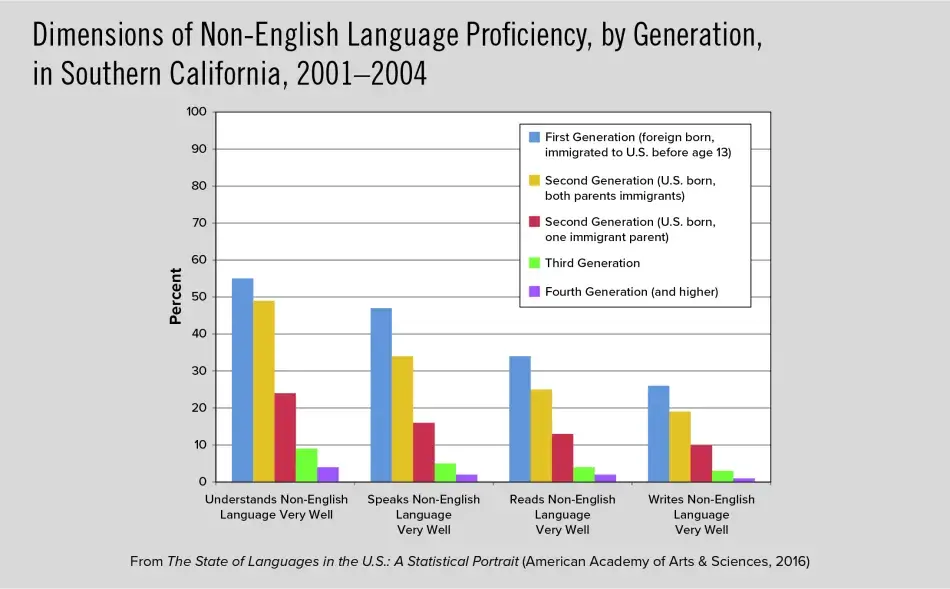Dimensions of Non-English Language Proficiency, by Generation, in Southern California, 2001–2004

Language proficiency is typically measured along four dimensions: reading, writing, speaking, and listening comprehension. Unfortunately, the U.S. Census Bureau does not collect data on the level of proficiency in a non-English language along any of these dimensions. As a result, data on non-English language fluency come from other studies.
A study in Southern California found that even in an area with a very high percentage of non-English speakers, language proficiency falls quickly in each generation after the first to enter the country. In the study, more than 45% of immigrants who arrived as children under the age of thirteen were able to speak and understand a non-English language well (though they are not necessarily literate in these languages). By the third generation, fewer than one in ten were able to communicate well in their heritage languages.